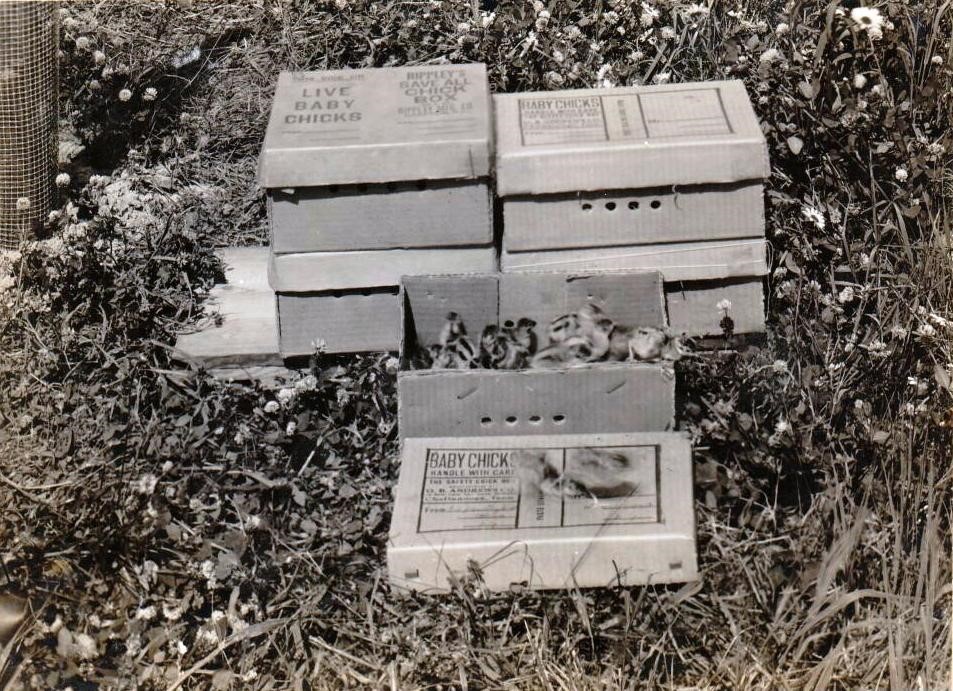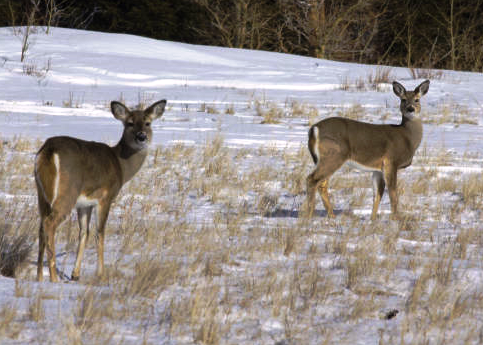Hunting & Trapping Newsletter
The New York State Department of Environmental Conservation sent this bulletin on 01/16/2019 03:14 PM EST |
| DEC Delivers - Information to keep you connected and informed from the NYS Department of Environmental Conservation |
| Share or view as a web page || Update preferences or unsubscribe |
Hunting & Trapping Newsletter |
DEC’s Day-Old Pheasant Chick Program is Celebrating 100 Years!Applications to participate in the program are due by March 25, 2019.
The Day-Old Pheasant Chick Program began in the early 1900s, and was officially established in 1919. This makes 2019 the 100th anniversary of this program. In the program’s early days, pheasant eggs and chicks were distributed solely to farmers and rural youth. Today, day-old chicks are available at no cost to any participant who can provide a brooding facility, a covered outdoor rearing pen, and an adequate release site. Release sites must be open to public pheasant hunting opportunities. The application period for the cooperative Day-Old Pheasant Chick Program has begun. Approved applicants will receive the day-old chicks in April, May or June, depending on egg-laying and hatching dates. Participants must provide daily care for the rapidly growing chicks, ensure they have adequate feed and water, and monitor their health. The pheasants may be released beginning when they are eight weeks old and must be released no later than Dec. 1. Individuals interested in these programs should contact their nearest DEC Regional Office for applications and additional information. Applications are also available at Day-Old Chick Program and the Pheasant Rearing Guide. Applications must be filed with a DEC regional wildlife manager by March 25, 2019. White-Tailed Deer: Winter Weaklings or Glacial Goliaths?
As temperatures drop and snow deepens, you may notice a group of white-tailed deer digging around in an open field or wandering through your yard in search of food. While you may be tempted to feed the deer, in reality, deer are well adapted to our winter conditions and, along with being illegal, feeding deer may actually do more harm than good. White-tailed deer go through both physical and behavioral changes that improve their survival odds during winter. Deer spend much of the fall season building up fat stores that will provide them with warmth and energy throughout winter. Externally, deer develop a thick winter coat of fur that helps them absorb more sunlight and traps in more body heat. They have special glands that secrete oils that make their hairs water repellent, keeping them warm and dry. Behaviorally, deer often move less during winter to reduce energy consumption. During periods with deep snow, deer may temporarily migrate to areas of dense conifer stands which provide thermal protection. This behavior is commonly known as ‘yarding’. Although providing deer with additional food in winter may seem like a good idea, there are negative consequences of doing so. The natural winter diet of a deer consists of leaves and twigs, but when deer are introduced to large amounts of grains (i.e. wheat, oats, rye) or corn, the influx of carbohydrates can result in acidosis, which can be fatal. Another concern is that by feeding deer in winter, you habituate them to your presence and make them less reliant on natural forage. Artificially congregating deer at feed sites can also increase disease transmission among deer or between deer and other animals, and it can quickly make deer become a nuisance. The best way to help deer, or other wildlife, survive through tough winters is to make sure they have enough natural forage during all seasons. You can do this by keeping deer numbers in balance with the habitat and improving the quality of existing natural foods. See Winter Deer Foods and Cutting Browse for Deer Feeding for more information. National Archery in the Schools Program – New York Is On Target!There is a great opportunity for school districts around the state to offer an in-school archery program for their students. The National Archery in the Schools Program (NASP) is a cooperative effort between DEC and New York schools to develop and foster youth participation in the lifelong sport of archery. Since its inception in NY in 2008, NASP has reached well over 400 schools and 300,000 students. New York NASP provides quality archery instruction in physical education curriculums for grades 4-12 at a national level. The program is designed to train teachers to deliver a minimum of two weeks of archery instruction to NASP students. Aimed to teach international style target archery, the core content covers archery history, safety, technique, equipment, mental concentration and self- improvement. The culminating event in New York is a live State Tournament held every March with the possibility to compete at the National level. The 2019 live tournament for participating schools is set for March 15th, at the State Fair Grounds in Syracuse. Visit National Archery in the Schools Program (NASP) or contact Jill Trunko, DEC NY NASP Coordinator at 518-402-8967 or jillian.trunko@dec.ny.gov if you would like to know more about the program or implement NASP in your school. DEC Seeks Assistance to Locate Black Bear Dens
This winter, DEC wildlife biologists are seeking the public's help to learn about new black bear dens throughout New York. As part of DEC's ongoing monitoring of black bears in New York, wildlife biologists periodically check on black bears during the winter den season. The bears may be fitted with a radio collar to help biologists track the bears' activities throughout the rest of the year and to relocate dens in subsequent years for monitoring cub production, condition and survival. Bears may den in a rock crevice, tree cavity, or under heavy brush or fallen trees. Since female bears generally give birth in January or early February, a high-pitched squeal from the cubs may be audible if near a den. New York hikers and hunters typically cover countless miles of wooded terrain each year. DEC urges anyone who finds a bear den to not approach or disturb the den, but simply to note the location and move away from the den site. DEC requests that anyone locating a bear den contact their local DEC Wildlife office with specifics about the den location, including GPS coordinates if possible. A list of regional wildlife offices is available on DEC's website. More information about black bears in New York is available at DEC's Black Bear web page. January Deer Hunting Opportunities in Central New YorkFrom January 12-31, 2019, there will be an antlerless deer season open in the Deer Management Focus Area (DMFA) in Tompkins County. To participate, hunters must register with the DMFA program and download a permit, carcass tags and a hunting activity log from the DEC website. Registered hunters may take up to two antlerless deer per day using any hunting implement that is legal during any other deer season at the site where they are hunting. The 60,000-acre DMFA was created in 2012 to help communities in the Ithaca area address problems caused by deer overabundance. It allows harvest of up to two antlerless deer per day throughout all the general deer hunting seasons, in addition to the January DMFA season. Hunters must carry a DMFA permit and DMFA carcass tags while they are hunting during the January season. They must also record their DMFA deer hunting activity and harvests on their hunting activity log and submit it to DEC by February 7. Additional information, including DMFA boundary descriptions and a printable map, is available on the DEC website. |

 The Day-Old Pheasant Chick Program allows people to participate in raising and releasing pheasants to enhance hunting opportunities in the fall. The program is a partnership among DEC, hunters, 4-H youth groups, and landowners interested in rearing and releasing pheasants.
The Day-Old Pheasant Chick Program allows people to participate in raising and releasing pheasants to enhance hunting opportunities in the fall. The program is a partnership among DEC, hunters, 4-H youth groups, and landowners interested in rearing and releasing pheasants.
